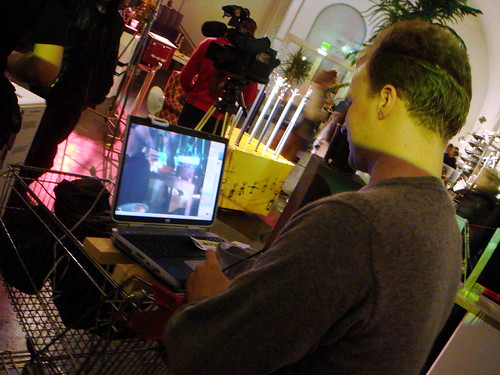Being a lobster and using a hammer: “homuncular flexibility” and distal attribution
Jaron Lanier (2006) calls the ability of humans to learn to control virtual bodies that are quite different than our own “homuncular flexibility”. This is, for him, a dangerous idea. The idea is that the familiar mapping of the body represented in the cortical homunculus is only one option – we can flexibly act (and perceive) using quite other mappings, e.g., to virtual bodies. Your body can be tracked, and these movements can be used to control a lobster in virtual reality – just as one experiences (via head-mounted display, haptic feedback, etc.) the virtual space from the perspective of the lobster under your control.
This name and description makes this sound quite like science fiction. In this post, I assimilate homuncular flexibility to the much more general phenomenon of distal attribution (Loomis, 1992; White, 1970). When I have a perceptual experience, I can just as well attribute that experience – and take it as being directed at or about – more proximal or distal phenomena. For example, I can attribute it to my sensory surface, or I can attribute it to a flower in the distance. White (1970) proposed that more distal attribution occurs when the afference (perception) is lawfully related to efference (action) on the proximal side of that distal entity. That is, if my action and perception are lawfully related on “my side” of that entity in the causal tree, then I will make attributions to that entity. Loomis (1992) adds the requirement that this lawful relationship be successfully modeled. This is close, but not quite right, for if I can make distal attributions even in the absence of an actual lawful relationship that I successfully model, my (perhaps inaccurate) modeling of a (perhaps non-existent) lawful relationship will do just fine.
Just as I attribute a sensory experience to a flower and not the air between me and the flower, so the blind man or the skilled hammer-user can attribute a sensory experience to the ground or the nail, rather than the handle of the cane or hammer. On consideration, I think we can see that these phenomena are very much what Lanier is talking about. When I learn to operate (and, not treated by Lanier, 2006, sense) my lobster-body, it is because I have modeled an efference–afference relationship, yielding a kind of transparency. This is a quite familiar sort of experience. It might still be a quite dangerous or exciting idea, but its examples are ubiquitous, not restricted to virtual reality labs.
Lanier paraphrases biologist Jim Boyer as counting this capability as a kind of evolutionary artifact – a spandrel in the jargon of evolutionary theory. But I think a much better just-so evolutionary story can be given: it is this capability – to make distal attributions to the limits of the efference–afference relationships we successfully model – that makes us able to use tools so effectively. At an even more basic and general level, it is this capability that makes it possible for us to communicate meaningfully: our utterances have their meaning in the context of triangulating with other people such that the content of what we are saying is related to the common cause of both of our perceptual experiences (Davidson, 1984).
References
Davidson, D. (1984). Inquiries into Truth and Interpretation. Oxford: Clarendon Press.
Lanier, J. (2006). Homuncular flexibility. Edge.
Loomis, J. M. (1992). Distal attribution and presence. Presence: Teleoperators and Virtual Environments, 1(1), 113-119.
White, B. W. (1970). Perceptual findings with the vision-substitution system. IEEE Transactions on Man-Machine Systems, 11(1), 54-58.
Laptop + shopping cart = mobile
This guy can roll up with laptop and webcam to record robots (photo CC from violetblue):
But in Silicon Valley, combining laptops and shopping carts is just a way to get chores done. When at Whole Foods in Los Altos, I saw a man pushing a shopping cart with a laptop in the part where you can sit your toddler. I suppose he was reading a recipe or something. (I, and I’m sure other Valley folks, do that on a phone.)
A bit odd, but then again, I used to be (I’ve fallen off a bit) judicious about capturing the contents of my shopping cart with ZoneTag.

